Are you considering the possibilities of a home theater setup? Perhaps one of your options is to use a projector instead of an HDTV and install it on the ceiling. But, before committing to this option, you may be wondering “Can a projector project on a ceiling?” Good news: You definitely can! In fact, mounting your projector up on the ceiling has many advantages that make it worth investigating further. In this article, we will discuss all the ways in which having your projector mounted onto or near a ceiling can benefit both convenience and clarity when watching movies or shows!
How Does a Projector Work?
Projectors are electronic devices used to project images onto a screen or wall. They use different technologies and components to achieve this task, such as digital light processing (DLP), liquid crystal display (LCD) and cathode ray tube (CRT). Here’s a look at how projectors work and the components involved. [1]
The first component of a projector is the light source. This can be either an LED, laser or a conventional bulb. A beam of light from the lamp passes through a spinning color wheel made up of red, green and blue filters that break down the white light into its primary colors. The image is then sent through LCD chips that act as pixels to produce an image on the screen.
DLP projectors use a different method to produce images. Instead of using an LCD chip, they employ a Digital Micromirror Device (DMD). This device has thousands of tiny mirrors that can tilt in either direction and reflect light from the lamp onto the screen. It is this process that enables high-definition images with better clarity and contrast levels.
Lastly, most projectors come with inputs such as HDMI, USB and VGA ports so you can connect various devices to the projector, such as computers, smartphones and tablets.
Projectors are a great way to display images on any surface for presentations or entertainment purposes. By understanding how projectors work and the components involved, you’ll be able to make an informed decision when shopping for one. With this knowledge in hand, you’ll be sure to find a projector that fits your needs and budget. [2]
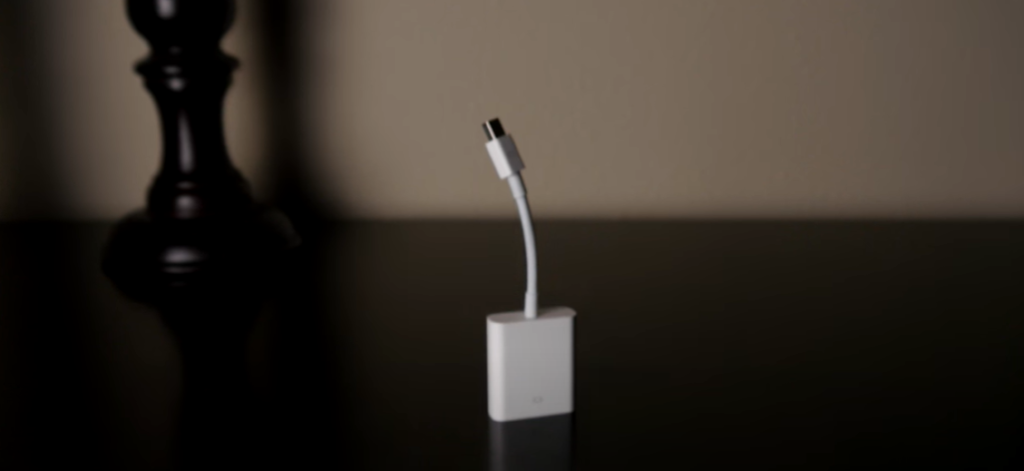
What Types of Projectors Are Available?
Today’s projectors come in a variety of different models, each featuring its own unique set of features and capabilities. From compact portables to powerful ultra-high definition home cinema systems, there is a projector to suit any need. [3]
- Portable Projectors are ideal for those who want the convenience of taking their display on the go. These small, lightweight units feature built-in speakers, and can be powered by AC or battery for maximum flexibility. Portable projectors are great for small groups, such as parties or presentations in home or office environments.
- Home Cinema Projectors offer a larger display area and the highest possible quality of image available in today’s market. Home cinema projectors make it easy to enjoy movies, sports and video games in the comfort of your own home. Many models feature cutting-edge technologies like 4K resolution and HDR for an incredibly lifelike experience.
- Business Projectors are designed to help presenters make a big impact on their audience. Business projectors have features such as network connectivity, wireless projection and multiple display configurations. These projectors are perfect for meetings, seminars or conferences.
- Outdoor Projectors are the perfect solution for outdoor viewing on an even bigger scale. Outdoor projectors offer a large display area, and come with features like weather-proofing, long lamp life and high brightness levels to ensure excellent visibility even in bright sunlight. With an outdoor projector, you can easily host movie nights, sports events or special occasions in your own backyard. [4]
How to Choose the Right Projector?
Choosing the right projector for your needs can be a daunting task. It’s important to consider several factors before purchasing, such as overall brightness, throw distance, resolution, and connectivity options. Here are some things to keep in mind when purchasing your next projector:
Brightness
The overall brightness of a projector is measured in lumens. For a projector to be used in darker environments, such as your home theater or dedicated media room, the brightness should be at least 2,000 lumens. However, if you plan on using your projector for business presentations or outdoor movies, you will need a higher lumen rating of around 3,000-4,500 lumens.
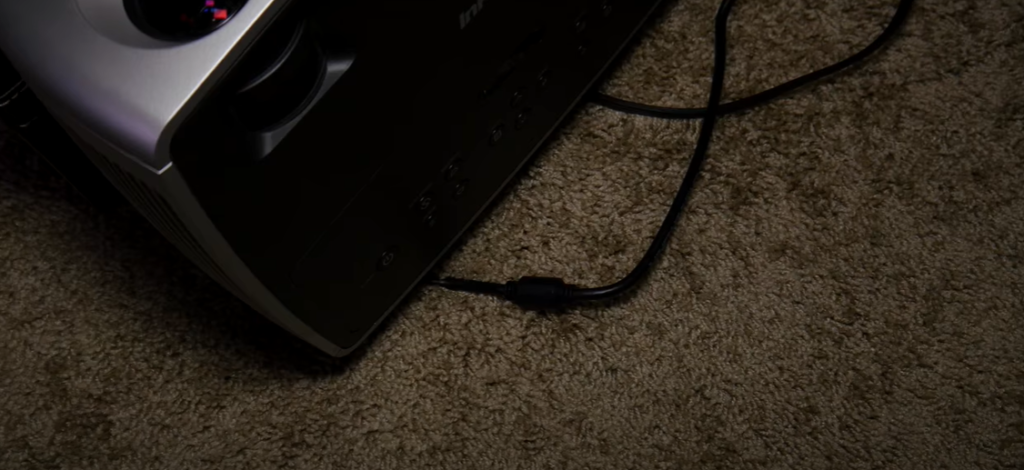
Throw Distance
The throw distance of a projector is the distance between the projector and screen. Depending on how far away your screen is, you may need to purchase a shorter or longer throw projector. Short throw projectors are ideal for smaller rooms, while ultra-short throw projectors can be mounted directly in front of the wall so there’s no need to worry about shadows or glare.
Resolution
Most current models of projectors come with 4K Ultra HD resolution, which provides an incredibly sharp image perfect for watching movies and streaming. However, if you’re looking for something more affordable, 1080p projectors are still a good option and provide excellent picture quality.
Connectivity Options
It’s important to make sure the projector you purchase has all the necessary input and output ports so that your media devices can be connected. Common ports on projectors include HDMI, DisplayPort, USB-C, VGA, and component video. You should also look for wireless connectivity options like Wi-Fi or Bluetooth if you want to stream content from your phone or laptop.
Price
The price of a projector will depend on the features you want, such as brightness, throw distance, resolution, and connectivity options. Generally speaking, budget projectors start at around $500 while high-end models can cost up to $2,000 or more. When shopping for a projector, it’s important to find a balance between features and affordability. [5]
What to View on a Projector?
Your projector can be used to display a variety of different materials. Whether you are using it for business presentations, educational purposes, or entertainment, having the right content is key.
Business Presentations
When presenting in business scenarios, slideshows with visuals and text content are perfect. You should use your projector to present your presentation in the best light possible. Having a projector that displays good colors and contrasts can help give your presentation the impact it needs to be successful.
Educational Purposes
Projectors are an excellent tool for educational purposes. From displaying videos to projecting slideshows, there is no limit on what you can do with them in the classroom. You can use a projector to show diagrams or charts to make it easier for students to understand a concept. Additionally, teachers can use projectors for digital instruction, helping engage their students more efficiently.
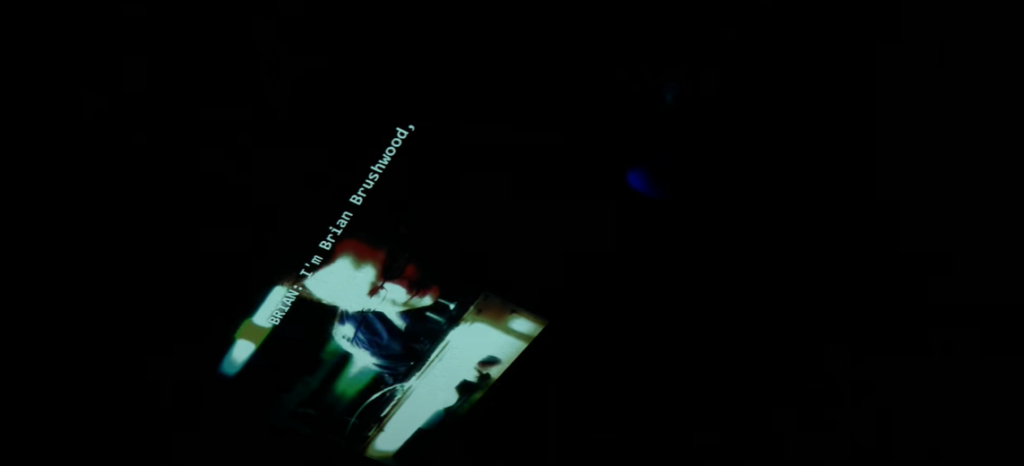
Entertainment
Projectors are also great for entertainment purposes. Whether you are watching movies or playing video games, having your own projector brings the excitement of cinema to your home without the expensive theater tickets. Having a projector can also make your gaming experience much more realistic, as the large screen helps to bring you into the game.
Additional Content
It is important to remember that projectors come in various sizes and specifications. Before buying a projector, consider what you need it for and make sure you find one that best suits your needs. Make sure to research the different features and prices of projectors available on the market so that you can make an informed decision. [6]
What is the Best Way to Use a Projector?
Once you have purchased a projector, using it is relatively simple. Simply plug in the power adapter and connect it to your video device using an HDMI cable or similar connection. Then, adjust the focus and zoom of the image until you are satisfied with the quality before turning on the projector.
Once your projector is up and running, you can start viewing content. Make sure to adjust the settings of your projector such as brightness, contrast, and color levels to get the best image quality possible.
When viewing content on a projector, try to keep unnecessary distractions away. This will help ensure that you can focus on the presentation or movie without interference. Plus, make sure to keep the room dark so that light does not interfere with the picture quality.
Finally, to get the most out of your projector, make sure to take care of it by cleaning and maintaining it regularly. Using a good cleaning solution and wiping away dust can help ensure that your projector lasts longer and displays better images. [7]
How Do I Get My Projector to Project on a Ceiling?
Projectors are great for projecting images onto a wall or screen, but you can also use them to project on the ceiling. To get your projector up and running with a ceiling-projection set-up, here are some tips:
- Choose and install an appropriate mount. You’ll need to find the right type of mounting bracket that will allow you to securely attach your projector to the ceiling.
- Consider the position of the projector. You’ll need to take into account the size and shape of the room you are in, as well as any obstructions such as light fixtures or vents that may be in the way before finding a spot for your projector equipment.
- Check the focus and alignment. Once the projector is installed, make sure that it can focus properly and that the screen is level with the ceiling. You may need to adjust the angle of the projector or use a remote-control device if you cannot reach up high enough.
- Connect your devices. Depending on what type of inputs your projector has, you’ll need to connect any audio and video devices you want to use.
- Test and enjoy! Once everything is set up, it’s time to test the projections by playing a few movies or photos. If all looks good, then you can start enjoying your ceiling-projection set-up! [8]
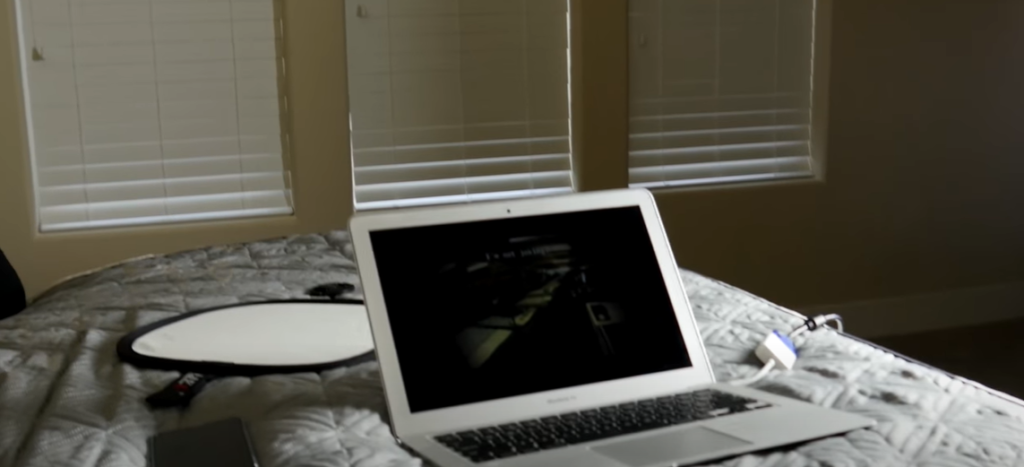
How to Set Up A Projector?
Once you have selected the best projector for your needs, it is important to ensure that you set up the projector correctly in order to maximize its potential. Whether you are using a professional or home-based model, there are several steps you can take to get the most out of your projector setup, including:
Place Your Projector and Screen Strategically
A successful projector setup requires both a well-placed projector and screen. Place the projector at least one foot away from any wall or surface for better heat dissipation, as well as in a location that will not be blocked by anyone during use. When it comes to positioning your projection screen, consider setting it up at eye level so viewers can easily view content.
Take Advantage of Image Adjustments
Most projectors come with a variety of image adjustments that you can make to your setup in order to optimize the quality of the projected image. This includes adjusting the brightness, contrast, and color saturation levels as needed. Additionally, many projectors have options for auto-scaling or aspect ratio adjustment that can further improve image quality.
Make Necessary Connections
In order to project content onto the screen, you will need to make sure your projector is properly connected to the source of your media, which could be a DVD player, laptop, or other device. Some projectors are equipped with USB ports for simple plug-and-play connections, while others require special cables or adapters in order to make the connection.
Use A Quality Audio Setup
Once you have established a successful projector and screen setup, it is time to consider your audio system. Depending on your budget and needs, there are many different types of speakers that can provide quality sound for various viewing scenarios. For example, soundbars and wireless speakers can offer great quality audio without taking up too much space.
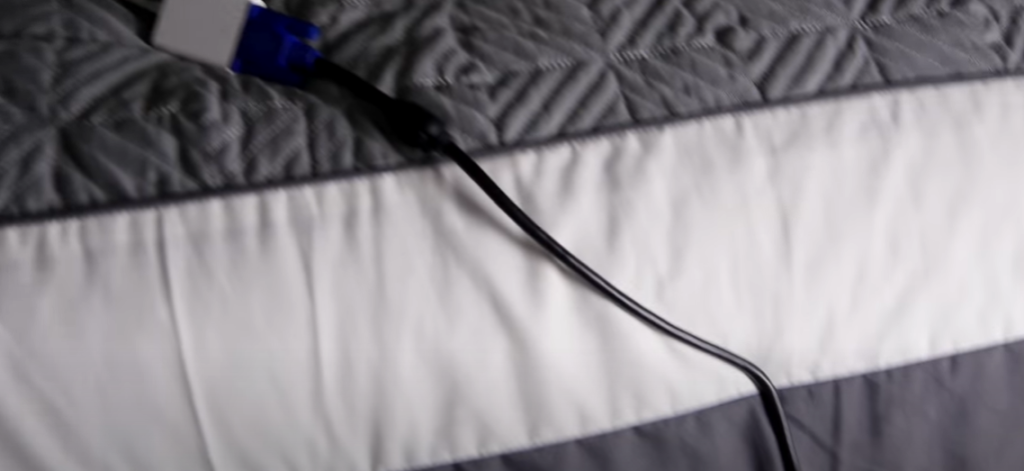
Consider Investing In a Projector Lift
If you are looking for a more permanent projector setup, then investing in a projector lift is a great option. Projector lifts are designed to provide easy access to your projector while also offering protection from dust and other environmental elements. Plus, these lifts are relatively easy to install and can be an excellent addition to your home or office.
Invest in a Portable Projector
Whether you need to present a slideshow or watch movies on the go, portable projectors are an excellent investment. Not only are they lightweight and easy to set up, but they also offer great image quality and features that can make your media viewing experience more enjoyable. Look for models with built-in battery packs and extended lamp life for added convenience.
Keep Your Projector Clean and Protected
Finally, it is important to keep your projector clean and well maintained in order to ensure its optimal performance. Make sure to regularly dust and check the air filter on your projector, as this can help extend its life and prevent damage from dust buildup. Additionally, investing in a projector cover or screen protector can help protect your projector from accidental damage or spills.
Get the Most Out of Your Projector Setup
By following the simple steps outlined above, you can get the most out of your projector setup and enjoy a great viewing experience. With these tips in mind, it is easy to ensure that no matter what type of projector you have, you will be able to use it to its full potential. [9]
How to Maintain the Projector?
Maintaining a projector is an important part of keeping it running smoothly. Here are some tips to help you maintain your projector in top condition:
- Clean the lens regularly to ensure optimal image quality. Use an appropriate cleaning solution and cloth, making sure not to scratch the lens during cleaning.
- Check for dust buildup inside the projector at least once a month. Use compressed air to remove any dust or debris.
- Replace the projector lamps as soon as they reach their maximum life expectancy, usually indicated by dimming of the images.
- Keep your projector in an appropriate environment – temperature and humidity should be maintained within the manufacturer’s guidelines, and avoid placing objects too close to the projector that could block the cooling vents.
- Keep the projector away from direct sunlight and other sources of heat, as this can cause overheating and reduce its lifespan.
- Make sure there are no obstructions (such as furniture or curtains) between your projector and the screen. This will ensure that you get a crisp image with minimal distortion.
- Take care when transporting the projector. Make sure it is properly packaged and handled with care to avoid any damages.
- If you are using a ceiling mount, make sure that it is securely installed and all bolts are tightened for optimal stability.
- Regularly check the cable connections between the projector and any other devices, such as DVD players or computers, ensuring a secure connection.
- If your projector has any software updates, make sure to install them as soon as they are available. This will help keep your projector running smoothly and efficiently.
- For more complex maintenance jobs, consider calling in a professional service to ensure that the job is done properly. [10]

What Problems Can Occur with the Projector?
Projectors may experience some common problems, such as image distortion or a lack of focus. In order to troubleshoot these issues, you should first check the connections and power supply. If necessary, reset the projector or try another power outlet.
Other potential problems include:
- Poor image quality due to incorrect settings
- Projector overheating
- Fuzzy or distorted images
- Screen flickering or smearing
- Low brightness/contrast levels
- Unstable resolution
If the projector still isn’t working, it may be time to consider replacing certain parts. Commonly replaced components include lamps, fans and other internal components. However, this should only be done if all other troubleshooting attempts have failed.
For more complicated problems, it may be best to consult a professional technician for further assistance. A trained technician can quickly diagnose the issue and provide helpful solutions. They will also be able to answer any additional questions you might have about your projector. [11]
FAQs
What projectors can be ceiling mounted?
Ceiling mounting a projector is an ideal way to get the most out of a home theater setup, but not every projector can be mounted in this way. The first step is to look for projectors that are compatible with ceiling mounts. Look for models that have the right VESA mount pattern and weight tolerance for your setup, as well as any other necessary features such as motorized lenses.
Another thing to consider is the throw ratio of the projector, which is a measure of how far the image will be projected from the ceiling mount. Many projectors have fixed throw ratios, so you need to make sure that this matches your setup and the size of your room.
Does a projector need a wall?
No, a projector does not need a wall in order to work. In fact, the majority of modern projectors are designed to be used without walls and instead use screens or other surfaces like ceilings or tripods as their projection surface. This makes them incredibly versatile and suitable for both indoor and outdoor environments.
Should I mount my projector on the wall or ceiling?
When deciding between wall or ceiling mounting your projector, the most important point to consider is what will be best for your space and setup. For instance, if you’ll be viewing your projection from a couch or seating area that’s lower than the projector itself, then wall mounting may be more appropriate. However, it’s also possible to hang projectors from the ceiling, which may be better suited for a larger, more spacious room.
How much power does a ceiling projector use?
Projectors can use different amounts of power, depending on what type of projector they are. Most ceiling projectors have a wattage that ranges from 200 to 300 watts, though some may be higher or lower. Generally speaking, the more powerful the projector is, the more energy it will consume. Additionally, how often you use your projector will also affect how much power it uses. If you’re looking for an energy efficient projector, make sure to look at the wattage rating and how often you’ll be using it before purchasing.
Useful Video: How to Watch TV on your Ceiling!
Conclusion
In conclusion, the answer to whether or not a projector can project on a ceiling is yes! With a few additional pieces of equipment and settings, you can easily mount the projector, produce a clear image, and enjoy movies and TV shows. You can even take it up a notch by using lenses to create different styles of projection. Of course, if you need more help or additional advice when setting up your ceiling projector, don’t hesitate to reach out to an expert who specializes in home theater system installations. With their expert knowledge and technical skills, they can transform the look and feel of any living space. So why wait? Get a projector and start projecting on the ceiling in no time!
References:
- https://www.projectorpoint.co.uk/blog/how-do-projectors-work
- https://www.makeuseof.com/how-does-a-projector-work/
- https://www.moglix.com/articles/types-of-projectors-based-on-their-applications
- https://www.newvisiontheatres.com/types-of-projectors
- https://www.purple-cat.co.uk/projector-buying-guide-how-to-choose-a-projector/
- https://www.ezcast.com/blog/10239/10-cool-and-fun-ways-to-use-a-projector
- https://www.projectorpoint.co.uk/blog/top-ten-tips-for-using-a-projector
- https://pointerclicker.com/can-a-projector-project-on-a-ceiling/
- https://www.cnet.com/tech/home-entertainment/9-tips-to-perfectly-set-up-your-projector/
- https://projectorninja.com/here-are-12-helpful-projector-care-and-maintenance-tips-to-keep-in-mind/
- https://pointerclicker.com/projector-display-problems/

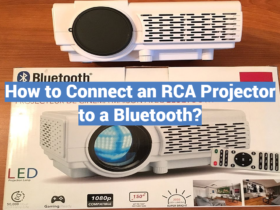



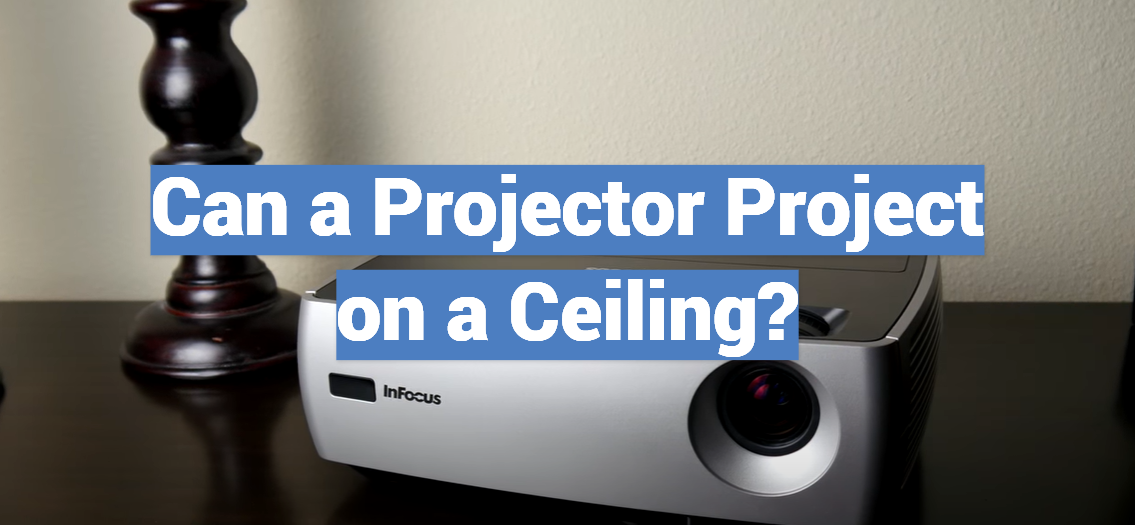

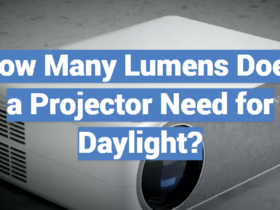
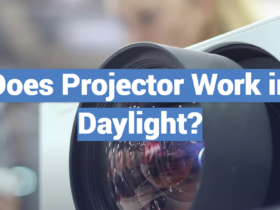
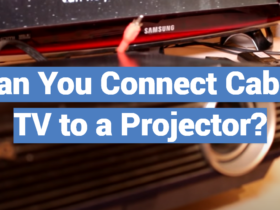
Leave a Review